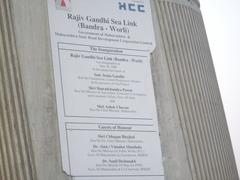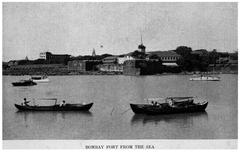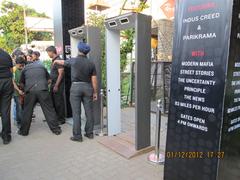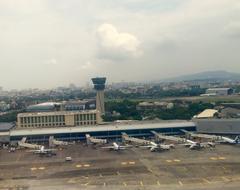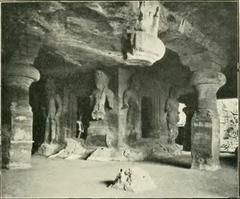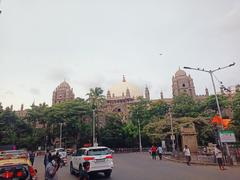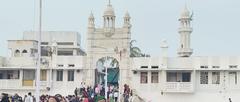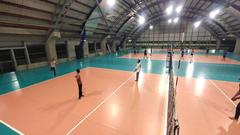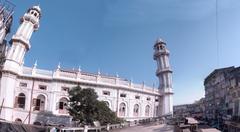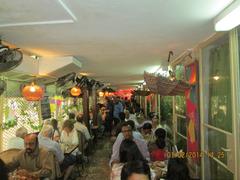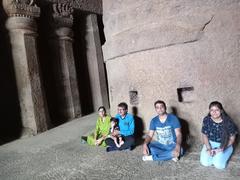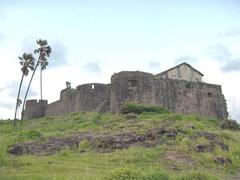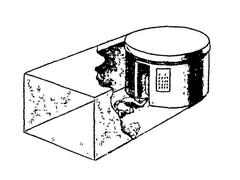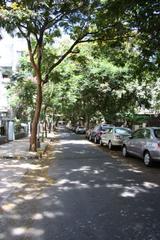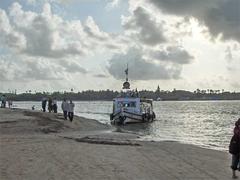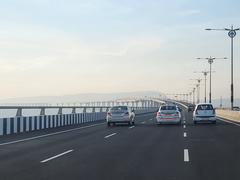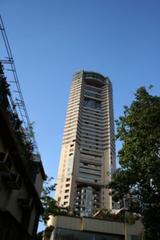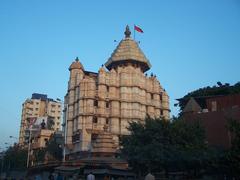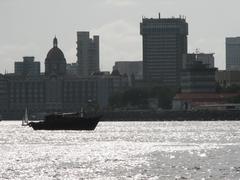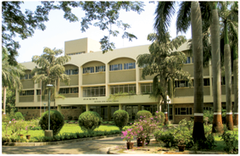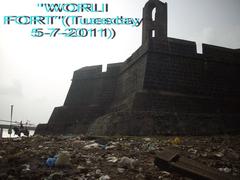Jogeshwari Caves: Visiting Hours, Tickets, and Historical Significance in Mumbai
Date: 14/06/2025
Introduction
Nestled in Mumbai’s western suburb of Jogeshwari East, the Jogeshwari Caves are a remarkable testament to India’s ancient spiritual, architectural, and cultural heritage. Dating back to the 6th century CE, these rock-cut caves are among the earliest and largest Hindu cave temples in India. They exhibit a unique blend of Buddhist and Hindu architectural influences, serving as a living monument to the evolution of Indian rock-cut architecture and religious syncretism. Visitors to Jogeshwari Caves can explore expansive halls, intricately carved deities such as Shiva, Parvati, Ganesha, and Jogeshwari, and sculptures that narrate centuries-old legends.
The site is not only an active place of Hindu worship but also holds historical importance as a prototype for later cave complexes like Elephanta and Ellora. Its accessibility via Mumbai’s trains and metro, along with affordable or free entry, makes it a destination for historians, tourists, families, and spiritual seekers. Despite facing urban encroachment and natural weathering, the Jogeshwari Caves remain a vibrant symbol of Mumbai’s rich historical tapestry. Visitors are encouraged to respect the site’s fragile heritage, engage with local guides, and consider exploring nearby attractions such as Mahakali, Mandapeshwar, and Kanheri Caves.
This comprehensive guide covers the caves’ history, architecture, visiting hours, ticketing, accessibility, safety tips, and cultural etiquette to ensure a memorable visit. Digital resources, including virtual tours and the Audiala app, further enhance the visitor experience (Wikipedia; Holidify; Bharat Buzzz; LBB Mumbai).
Historical Background and Significance
Origins and Early Development
Jogeshwari Caves are considered among the oldest and largest rock-cut cave complexes in India, attributed to the late Gupta period (ca. 520–550 CE) (Wikipedia; Ghoomketu). These caves were likely excavated by artisans migrating from Ajanta after the decline of Buddhist patronage, now supported by the Hindu Kalachuri dynasty (Medium). Their design influenced later cave temples, notably the Elephanta Caves.
Architectural Features and Innovations
The caves feature a vast main hall (vihara) supported by massive basalt pillars and showcase both Buddhist and Hindu influences. Early Buddhist monastic elements coexist with Hindu iconography, including sculptures of Shaiva and Shakta deities (Trip101). This synthesis marks a significant transition in Indian rock-cut temple art.
Religious and Cultural Significance
Initially used by Buddhist monks, the caves were later transformed into a major Hindu temple complex dedicated to the goddess Jogeshwari, a local form of Mahalakshmi (Ghoomketu). Today, the site remains a community hub for festivals and rituals, underscoring its enduring cultural importance.
Artistic Legacy and Iconography
The cave walls are adorned with intricate carvings and sculptures depicting Shiva, Parvati, Ganesha, Durga, and the goddess Jogeshwari, reflecting late Gupta and early Chalukya artistry (Trip101). The uniquely carved pillars and sanctum are hallmarks of artistic innovation.
Dynastic Patronage and Local Traditions
Constructed during a period of major religious shifts, the caves received patronage from the Kalachuri dynasty, who promoted Hindu temple building as Buddhist influence waned (Medium). Local legends link the caves to the Pandavas and to mythic underground passages, enriching the site’s lore (Trip101).
Architecture and Artistic Features
Layout and Spatial Organization
Extending roughly 250 feet, Jogeshwari Caves are among India’s longest cave shrines. The main cave includes a vast, asymmetrical hall supported by monolithic pillars, leading to the central sanctum (garbhagriha) with a large Shiva lingam. Multiple entrances and subsidiary shrines branch off the main hall.
Pillars and Structural Elements
Basalt pillars provide both structural support and sacred demarcation. An open porch at the entrance, with colonnaded design, demonstrates an evolution from earlier Buddhist viharas and chaityas to Hindu cave temples.
Sculptural Program and Iconography
The caves emphasize Shaivite iconography, including depictions of Shiva as Nataraja and Ardhanarishvara. Jogeshwari, a local manifestation of Devi, has a prominent shrine, and other deities such as Ganesha and Parvati appear in subsidiary panels.
Transitional Architectural Significance
Jogeshwari Caves bridge the gap between earlier Buddhist caves like Ajanta and later Hindu sites such as Ellora, blending colonnaded porches and axial plans with large-scale Hindu iconography.
Visiting Jogeshwari Caves: Practical Information
Visiting Hours
- Open daily from 6:00 AM to 6:00 PM (Holidify; LBB Mumbai).
Tickets and Entry Fees
- Indian Citizens: ₹15
- Foreign Nationals: ₹200
- Tickets are available on-site; check for updates before visiting (Holidify; LBB Mumbai).
How to Reach
- By Train: Jogeshwari Railway Station (Western Line), 3 km from the caves; auto-rickshaws and taxis available.
- By Metro: Western Line services Jogeshwari area (Bharat Buzzz).
- By Road: Accessible by taxi, auto-rickshaw, or private vehicle; parking is limited.
- By Air: Chhatrapati Shivaji Maharaj International Airport is 7–10 km away.
Accessibility
- Access is via a long flight of stairs, with uneven and sometimes slippery cave floors, particularly during monsoon (LBB Mumbai).
- Not wheelchair accessible.
Recommended Visit Duration
- Allocate 1–2 hours for a thorough exploration (Bharat Buzzz).
On-Site Experience: Layout, Safety, and Photography
- Layout: Visitors ascend a staircase with idols of Dattatreya, Hanuman, and Ganesh. The main hall features a central Shiva Lingam, footprints of Goddess Jogeshwari, and shrines to other deities (LBB Mumbai; Mumbai Orbit).
- Safety: The caves are dimly lit; a flashlight or phone torch is recommended. Surfaces can be slippery, especially during monsoon (Bharat Buzzz).
- Cleanliness: The Archaeological Survey of India (ASI) conducts regular maintenance, but visitors should remain cautious due to low ceilings and wildlife.
- Photography: Allowed throughout most areas; seek permission before photographing worshippers or rituals (Bharat Buzzz).
Facilities and Guided Tours
- Restrooms: Available nearby but not within the complex.
- Shops and Eateries: Local restaurants within 1–3 km (LBB Mumbai).
- Guided Tours: Local guides offer historical and cultural tours (Bharat Buzzz).
- Accommodation: Options available within 5 km (Holidify).
Best Time to Visit
- October to Mid-April: Ideal for cooler weather.
- Summer (April–June): Hot and humid.
- Monsoon (June–September): Slippery, increased bat activity; romantic ambiance.
- Festivals: Navaratri and other Hindu festivals bring vibrant decorations and crowds (Bharat Buzzz).
Cultural Etiquette and Visitor Tips
- Dress modestly.
- Wear comfortable, non-slip footwear.
- Respect ongoing rituals and avoid disturbing worshippers.
- Carry your trash and keep the site clean.
- Bring a flashlight for dark sections.
- Stay hydrated and use insect repellent during monsoon.
Nearby Attractions and Suggested Itineraries
- Mahakali Caves: ~5 km
- Mandapeshwar Caves: ~10 km
- Kanheri Caves (Sanjay Gandhi National Park): ~15 km
- Chota Kashmir: Nearby scenic park
- Plan a day or weekend trip to explore these sites (LBB Mumbai; Reddit).
Conservation Status and Challenges
Oversight and Legal Protection
- Managed by the Archaeological Survey of India (MMRHCS, p. 141).
Environmental Pressures
- Natural weathering, erosion, and monsoon rains impact the caves’ structure (MMRHCS, p. 141-142).
- Urban encroachment, pollution, and waste management are persistent threats (Zenodo, 2022).
Ritual Practices and Community Challenges
- Active worship causes wear from foot traffic and ritual activities (MMRHCS, p. 141).
- Limited public awareness and overlapping jurisdiction complicate preservation (MMRHCS, p. 191).
Digital Conservation
- Emerging technologies like 3D scanning and virtual tours are being explored for documentation and preservation (Zenodo, 2022).
Summary Table: Key Visitor Information
| Aspect | Details |
|---|---|
| Location | Gupha Tekdi, Jogeshwari East, Mumbai |
| Visiting Hours | 6:00 AM – 6:00 PM (daily) |
| Entry Fees | ₹15 (Indians), ₹200 (Foreigners) |
| Visit Duration | 1–2 hours |
| Accessibility | Stairs, uneven surfaces, not wheelchair-friendly |
| Facilities | Restrooms nearby, eateries, guided tours |
| Best Time to Visit | October–mid-April; avoid peak summer and heavy monsoon |
| Nearby Attractions | Mahakali, Mandapeshwar, Kanheri Caves, Chota Kashmir |
| Safety | Generally safe; remain aware, especially after dark |
| Photography | Allowed; seek permission for rituals/worshippers |
Frequently Asked Questions (FAQs)
Q: What are the Jogeshwari Caves visiting hours?
A: The caves are open daily from 6:00 AM to 6:00 PM.
Q: How can I buy Jogeshwari Caves tickets?
A: Tickets are available on-site; Indian citizens pay ₹15 and foreign nationals ₹200.
Q: Are the caves wheelchair accessible?
A: No, access involves stairs and uneven surfaces.
Q: Is photography allowed inside the caves?
A: Yes, but please seek permission before photographing worshippers or rituals.
Q: What is the best time to visit Jogeshwari Caves?
A: October to mid-April for pleasant weather.
Tips for Visitors
- Respect the Site: Avoid touching carvings; stay on marked paths.
- Cleanliness: Carry out all litter; do not bring food or drinks into sensitive areas.
- Guided Tours: Support local guides and conservation efforts.
- Report Issues: Notify authorities of any damage or suspicious activities.
Enhance Your Visit
Consider exploring virtual tours, high-quality images, and using the Audiala app for audio guides and virtual experiences. Follow official tourism platforms for updates on events, conservation projects, and travel tips.
Conclusion and Call to Action
The Jogeshwari Caves offer an unparalleled journey into Mumbai’s ancient religious and architectural heritage. As one of India’s oldest Hindu cave temples, they provide visitors with a unique synthesis of spiritual ambiance, artistic mastery, and historical significance. Ongoing conservation efforts and responsible tourism are essential to preserving this monument for future generations. Plan your visit during the cooler months, engage with guided tours, and enrich your experience with digital resources like the Audiala app. Immerse yourself in Mumbai’s cultural legacy at Jogeshwari Caves—an essential destination for every history and heritage enthusiast.
Sources and Further Reading
- Wikipedia, Jogeshwari Caves
- Holidify, Jogeshwari Caves Mumbai: Visiting Hours, Tickets, and Tips
- Bharat Buzzz, How to Reach Jogeshwari Caves
- LBB Mumbai, Jogeshwari Caves Guide
- MMRHCS Report, Heritage Awareness of Caves
- Zenodo, Jogeshwari Caves Conservation Research
- TripXL Guide to Jogeshwari Caves
- Mumbai Orbit: Jogeshwari Caves
- Ghoomketu: Jogeshwari Caves
- Medium: Jogeshwari Cave Temple
- Trip101: Jogeshwari Caves Mumbai
- Reddit: Visiting the caves of Mumbai
